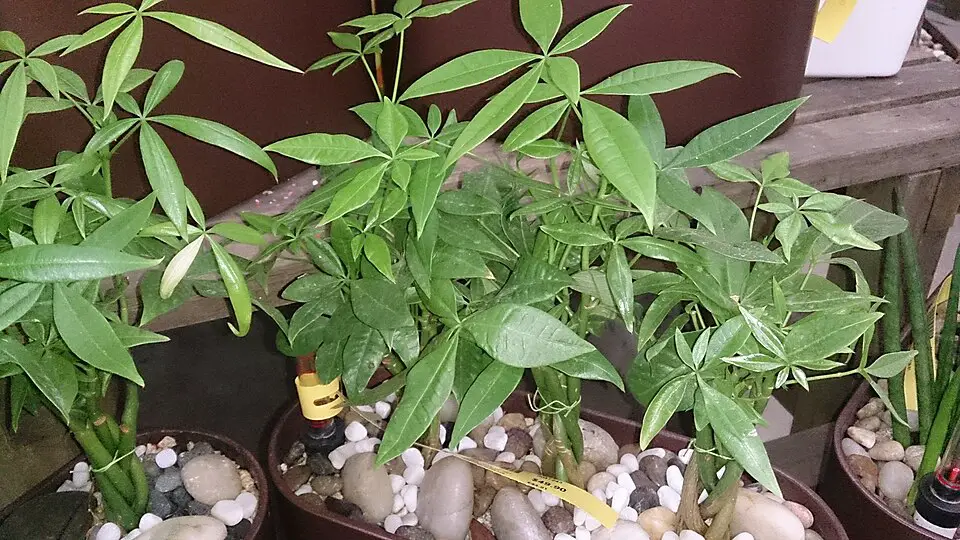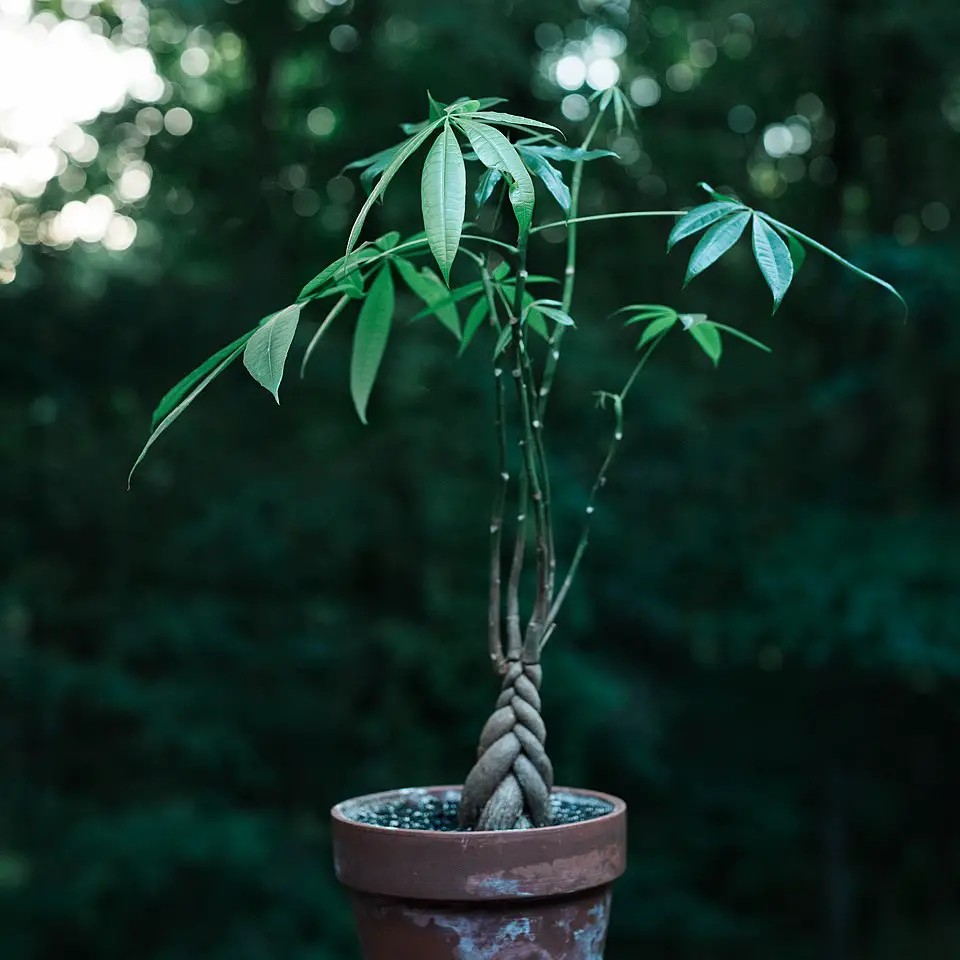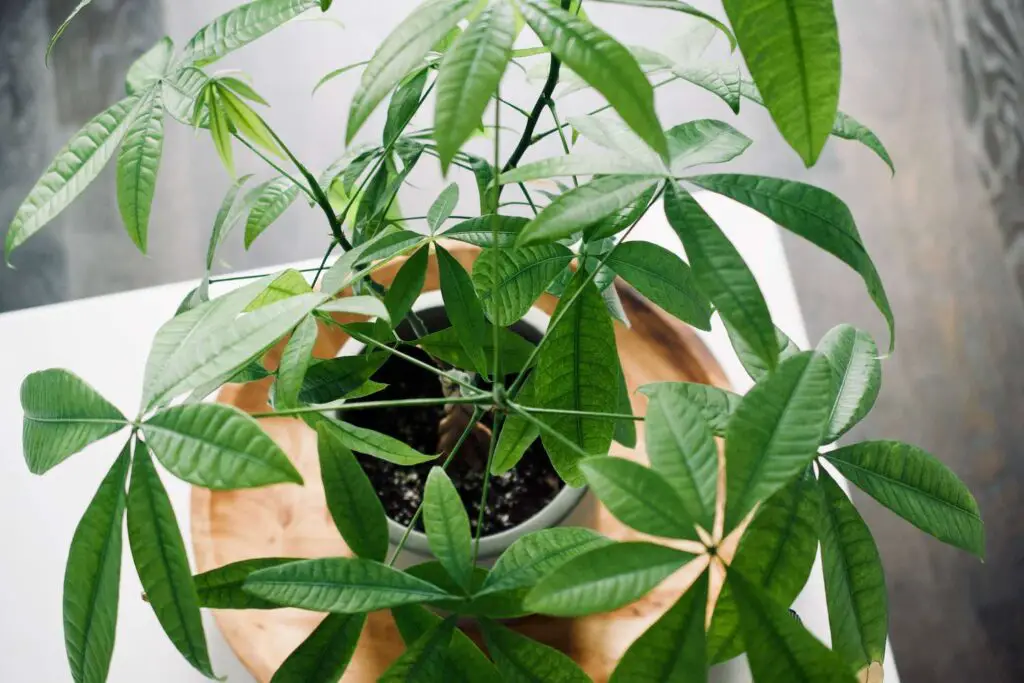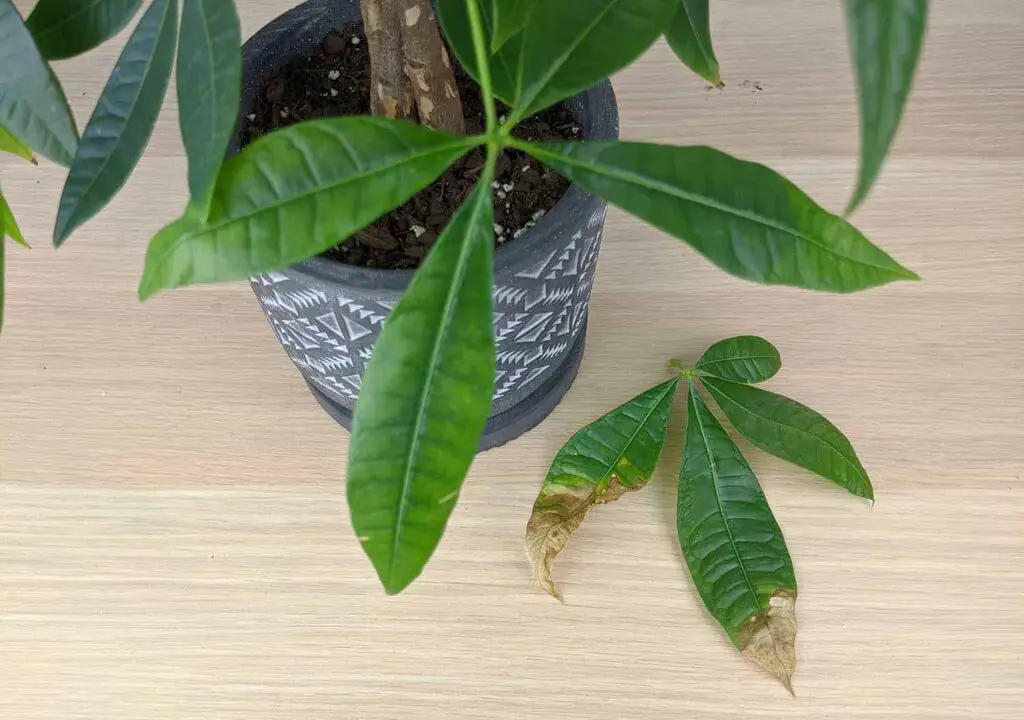To propagate a Money Tree in water, start by selecting a healthy cutting with several leaves. Remove the lower leaves and place the cutting in a container filled with water. Ensure the water covers the cut end of the stem but not the leaves. Change the water every few days to promote root growth.
Understanding the Money Tree
The Money Tree, or Pachira aquatica, is a popular houseplant known for its unique braided trunk and lush green leaves. This plant is often associated with good luck and prosperity in many cultures, making it a favorite in homes and offices alike. The Money Tree thrives in warm, humid environments and can reach up to 8 feet tall when cared for properly.

One of the most appealing aspects of the Money Tree is its ability to be easily propagated. Propagation allows you to create new plants from existing ones, saving money and expanding your indoor garden. Water propagation is particularly beginner-friendly, as it requires minimal equipment and provides clear visibility into the root development process.
Benefits of Propagating in Water
Propagating a Money Tree in water offers several advantages:
- Visibility: You can easily observe root development without disturbing the plant.
- Simplicity: Water propagation requires fewer materials than soil propagation.
- Success Rate: Many beginners find higher success rates when propagating in water.
Essential Tools and Materials
Before you start propagating your Money Tree, gather the necessary tools and materials. Here is a list to help you prepare:

- A healthy Money Tree plant
- Sharp scissors or pruning shears
- A clean glass or jar
- Water (preferably distilled or filtered)
Selecting the Right Cutting
Choosing the right cutting is crucial for successful propagation. Look for a healthy stem that is at least 6 inches long and has several leaves. The cutting should be free from any disease or damage. A strong cutting will increase your chances of developing a robust new plant.
Steps to Propagate Your Money Tree in Water
Follow these simple steps to propagate your Money Tree in water:
- Select a healthy cutting from your Money Tree.
- Using sharp scissors, make a clean cut just below a leaf node.
- Remove any leaves from the lower half of the cutting to prevent rot.
- Place the cutting in a clean glass or jar filled with water, ensuring that only the cut end is submerged.
- Set the glass in a warm, bright location but out of direct sunlight.
- Change the water every few days to keep it fresh and encourage root growth.
- After a few weeks, roots should begin to develop. Wait until they are at least 2-3 inches long before transferring to soil.
Monitoring Growth
As your Money Tree cutting develops roots, monitor its growth closely. Check the water level regularly and ensure it remains adequate. If you notice any signs of yellowing leaves or slimy stems, it may indicate overwatering or bacterial growth. Keeping the water clean is essential for successful propagation.

Common Challenges and Solutions
While propagating a Money Tree in water is generally straightforward, you may encounter some challenges. Here are a few common issues and their solutions:
| Issue | Solution |
|---|---|
| Cutting Rotting | Ensure leaves are above water level. Change the water regularly. |
| No Root Development | Check if the cutting is healthy and try placing in indirect sunlight. |
| Yellowing Leaves | Adjust light conditions. Ensure proper water levels. |
With patience and proper care, propagating a Money Tree in water can be a rewarding experience. This process not only allows you to expand your plant collection but also gives you insight into the growth habits of this beautiful plant.
Transferring Roots to Soil
Once your Money Tree cutting has developed healthy roots, it is time to transfer it to soil. This stage is crucial for the plant’s growth, as it transitions from water to a more stable environment. Here are some important considerations for moving your cutting to soil.
Choosing the Right Pot
Selecting an appropriate pot is vital for the health of your new Money Tree. Consider the following factors:

- Size: Choose a pot that is slightly larger than the root ball. This allows for growth without overwhelming the plant.
- Drainage: Ensure the pot has drainage holes to prevent water from accumulating and causing root rot.
- Material: Terracotta or plastic pots can work well. Terracotta allows for better air circulation, while plastic retains moisture.
Soil Selection
The type of soil you use can significantly impact the growth of your Money Tree. A well-draining potting mix is essential. Here are some options:
- Pottng Mix: Use a commercial potting mix that retains moisture while allowing excess water to drain.
- Cactus Mix: A cactus or succulent mix can be beneficial due to its excellent drainage properties.
- Custom Mix: You can create your own mix by combining potting soil with perlite or coarse sand for added drainage.
Steps to Transplant Your Cutting
Transplanting your rooted cutting is a simple process. Follow these steps to ensure a smooth transition:
- Prepare the new pot by adding a layer of soil at the bottom.
- Gently remove the cutting from the water, being careful not to damage the roots.
- Place the cutting in the center of the pot, ensuring that the roots spread out naturally.
- Fill in around the roots with additional soil, pressing down lightly to eliminate air pockets.
- Water the plant lightly to help settle the soil but avoid overwatering.
- Place the pot in a warm, bright location with indirect sunlight.
Care After Transplanting
After transplanting your Money Tree, proper care is crucial for its adaptation to the new environment. Here are some tips:
- Watering: Water the plant when the top inch of soil feels dry. Ensure excess water can drain out of the pot.
- Humidity: Money Trees prefer humidity. Consider using a pebble tray or humidifier if your home is dry.
- Light Conditions: Place your Money Tree in bright, indirect light. Avoid direct sunlight, which can scorch the leaves.
- Fertilization: After a month, you can begin applying a balanced liquid fertilizer every four to six weeks during the growing season.
Monitoring Growth and Adjustments
As your Money Tree settles into its new pot and begins to grow, keep an eye on its overall health. Watch for signs of stress or nutrient deficiency. Here are some indicators to monitor:
- Leaf Color: Healthy leaves should be vibrant green. Yellowing may indicate overwatering or nutrient issues.
- Growth Rate: A thriving Money Tree will show new growth regularly. Stagnation could suggest inadequate light or nutrients.
- Pests: Check for signs of pests like spider mites or aphids. If detected, treat promptly with insecticidal soap or neem oil.
Common Mistakes to Avoid
Avoiding common mistakes can lead to a successful transition from water propagation to soil growth. Be mindful of these pitfalls:
- Overwatering: This is one of the most common mistakes. Ensure proper drainage and allow the soil to dry out between waterings.
- Insufficient Light: Money Trees need bright, indirect light. Too little light can hinder growth.
- Poor Soil Quality: Using heavy or compacted soil can suffocate roots. Always opt for well-draining mixes.
Caring for your newly transplanted Money Tree requires attention and patience. By providing optimal conditions, you will encourage healthy growth and establish a beautiful addition to your indoor space.
Advanced Care Techniques for Your Money Tree
Once your Money Tree is established in soil, you can enhance its growth and overall health with advanced care techniques. These methods will help you create an optimal environment and ensure that your plant thrives.
Humidity and Temperature Requirements
Money Trees thrive in warm and humid conditions. Understanding their humidity and temperature preferences can significantly impact their growth:
- Humidity: Aim for a humidity level of 50-70%. You can increase humidity by misting the leaves regularly or placing a humidifier nearby.
- Temperature: Keep your Money Tree in temperatures between 65°F to 80°F (18°C to 27°C). Avoid sudden temperature drops, especially during winter.
Pruning for Health and Aesthetics
Regular pruning is essential for maintaining a healthy Money Tree. Pruning helps shape the plant and encourages bushier growth. Here are some tips for effective pruning:
- When to Prune: The best time to prune is during the growing season, typically in spring or early summer.
- What to Remove: Cut off any dead or yellowing leaves, as well as any stems that appear weak or leggy.
- Shaping the Plant: If you desire a specific shape, prune back the tips of the branches to encourage lateral growth.
Fertilizing Your Money Tree
Fertilizing your Money Tree can boost its growth and enhance its health. Here are some guidelines for effective fertilization:
- Type of Fertilizer: Use a balanced, water-soluble fertilizer with equal parts nitrogen, phosphorus, and potassium (NPK). A ratio like 10-10-10 is ideal.
- Frequency: Fertilize every 4-6 weeks during the growing season (spring and summer). Reduce or stop fertilizing in the fall and winter months.
- Dilution: Always dilute the fertilizer according to package instructions to avoid burning the roots.
Pest Management and Prevention
Pest infestations can threaten the health of your Money Tree. Being proactive in pest management is essential. Here are some common pests and effective treatment methods:
Common Pests
- Spider Mites: These tiny pests create fine webs on leaves. They thrive in dry conditions. Increase humidity to deter them.
- Aphids: Aphids are small, green insects that suck plant sap. To control them, wipe leaves with soapy water or spray with insecticidal soap.
- Mealybugs: Mealybugs appear as white cottony masses on stems and leaves. Remove them by hand or treat with neem oil.
Pest Prevention Tips
Preventing pests is often easier than treating an infestation. Here are some tips to keep your Money Tree pest-free:
- Regular Inspections: Check your plant weekly for any signs of pests or disease.
- Clean Leaves: Wipe down leaves regularly to remove dust and reduce pest attraction.
- Avoid Overcrowding: Provide enough space between plants to ensure good air circulation, which helps reduce pest issues.
Dealing with Common Issues
Your Money Tree may encounter some common issues during its growth. Recognizing and addressing these problems early can prevent further damage:
Leaf Drop
If your Money Tree begins to drop leaves, consider these factors:
- Watering Issues: Overwatering or underwatering can lead to leaf drop. Ensure you are following proper watering guidelines.
- Light Conditions: Sudden changes in light exposure can shock the plant. Gradually acclimate it to new lighting conditions.
Brown Leaf Tips
Browning at the leaf tips can signal several issues:
- Low Humidity: Increase humidity levels if your home is particularly dry.
- Nutrient Deficiency: Ensure your plant receives adequate nutrition through regular fertilization.
By implementing these advanced care techniques, you can create a thriving environment for your Money Tree. This attention to detail will reward you with a healthy, vibrant plant that enhances your living space.
Long-Term Care for Your Money Tree
To ensure your Money Tree remains healthy and vibrant over the long term, consider the following care practices that extend beyond the basics of watering and light management. These practices will help sustain your plant’s health and aesthetic appeal.
Repotting Your Money Tree
As your Money Tree grows, it may eventually outgrow its pot. Repotting is essential to provide enough space for root expansion. Here are guidelines for repotting:
- Timing: Repot your Money Tree every 2-3 years during the spring, as this is the active growing season.
- Pot Size: Choose a pot that is 1-2 inches larger in diameter than the current pot. This provides enough room for growth without overwhelming the plant.
- Process: Carefully remove the plant from its pot, gently loosening the roots. Place it in the new pot with fresh soil, ensuring it is at the same depth as before.
Seasonal Adjustments
Seasonal changes can affect your Money Tree’s care needs. Adjusting your care routine based on the season will help maintain its health:
- Spring and Summer: Increase watering frequency as the plant actively grows. Consider repotting if necessary.
- Fall: Gradually reduce watering as growth slows down. Watch for pests as indoor conditions change.
- Winter: Keep the plant in a warmer area away from drafts. Water less frequently, allowing the soil to dry out more between waterings.
Exploring Other Propagation Methods
Wh
ile propagating a Money Tree in water is straightforward and effective, you may also consider other propagation methods for variety. Here are two alternative techniques:
Soil Propagation
This method involves planting cuttings directly into the soil instead of water. Here’s how to do it:
- Select a healthy cutting and remove lower leaves.
- Dip the cut end in rooting hormone to encourage root growth.
- Plant the cutting in a small pot filled with well-draining soil.
- Water lightly and cover with a plastic bag to maintain humidity until roots develop.
Air Layering
Air layering is another propagation technique suitable for larger plants. This method encourages roots to grow on a branch while still attached to the parent plant:
- Select a healthy branch and make a small incision on the underside.
- Wrap the incision with moist sphagnum moss and cover it with plastic wrap to retain moisture.
- Once roots develop (in a few weeks), cut below the new root system and transplant it into a pot.
Final Thoughts
Propagating a Money Tree in water is an enjoyable and rewarding process that can lead to beautiful, thriving plants. By understanding the needs of your Money Tree and implementing proper care techniques, you can create an environment where your plant flourishes. From selecting healthy cuttings to providing adequate light and humidity, every step impacts your plant’s health.
Remember that patience is key when propagating and nurturing your Money Tree. With time, you will witness the joys of growth and expansion in your plant collection. Whether you’re a beginner or an experienced gardener, propagating a Money Tree will deepen your appreciation for this remarkable plant and its ability to bring luck and prosperity into your home.
As you embark on this gardening journey, embrace each stage of growth, remain attentive to your plant’s needs, and enjoy the process of nurturing life in your space. Happy gardening!
